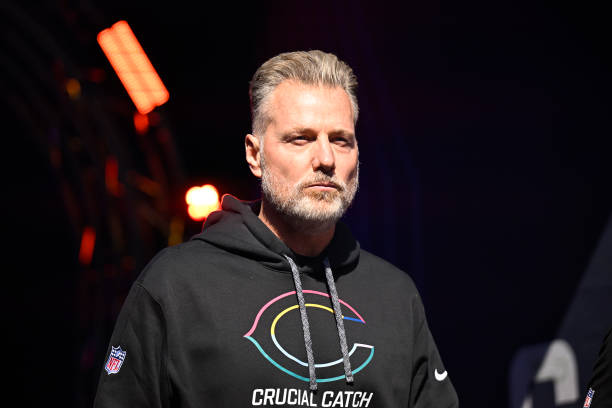In an unexpected twist in the world of sports fandom, the Chicago Bears have found themselves at the center of a peculiar controversy involving a local mascot known as the “booster rooster.” This quirky character, meant to rally support for the team, has recently turned its feathers toward head coach Matt Eberflus, leading to a wave of discussions among fans and media alike.

The booster rooster, an oversized costume donned by a dedicated Bears supporter, was initially created to energize the crowd at Soldier Field. Its vibrant personality and antics were meant to embody the team spirit and bring fans together, especially during tough seasons. However, the tide seems to have shifted, as the rooster has become a symbol of discontent among some Bears fans regarding Eberflus’s coaching decisions.
Critics have expressed their frustration over the team’s performance under Eberflus, particularly during key games that have resulted in disappointing losses. The rooster, once a beloved figure, now stands as a visual protest, holding signs and shouting slogans that question the coach’s strategies and decisions. This unprecedented move has sparked debates among fans, with some praising the rooster for taking a stand while others criticize the antics as counterproductive.
Eberflus, who was hired with high expectations to revitalize the Bears’ struggling franchise, has faced mounting pressure as the team continues to struggle on the field. The fans’ loyalty to the team is unwavering, but their patience is wearing thin as they seek answers to why the Bears haven’t seen the improvements they hoped for. The booster rooster’s actions reflect a broader sentiment among the fanbase that change is necessary.
As social media platforms buzz with posts about the rooster’s protest, it has become clear that this quirky mascot has tapped into the frustrations of many loyal Bears supporters. While some may view the rooster’s antics as humorous, others see it as a rallying cry for accountability within the organization. The situation raises questions about the line between fandom and criticism, especially when mascots take on a life of their own in the realm of sports culture.
In the end, whether the booster rooster’s efforts will lead to any real change for the Chicago Bears remains to be seen. However, it’s evident that the combination of passionate fans and unconventional expressions of discontent can influence the narrative surrounding a team. As the Bears navigate the challenges ahead, the roar of the crowd—both for and against the current coaching regime—will undoubtedly play a significant role in shaping their future.
